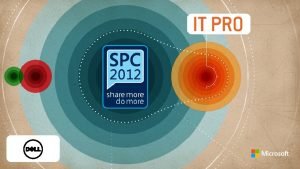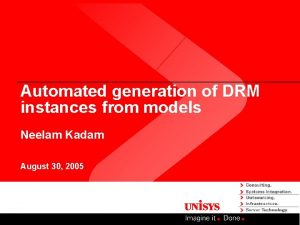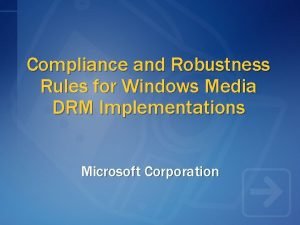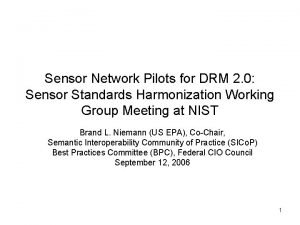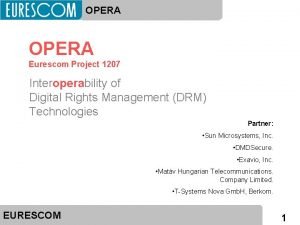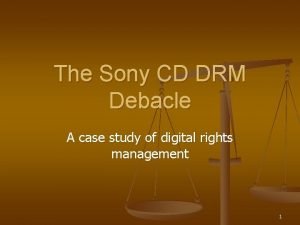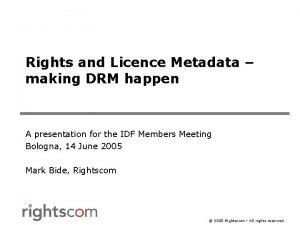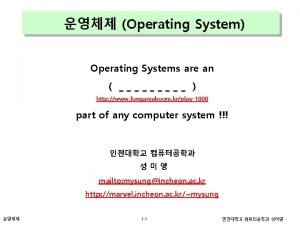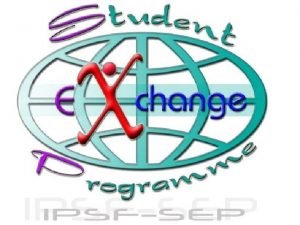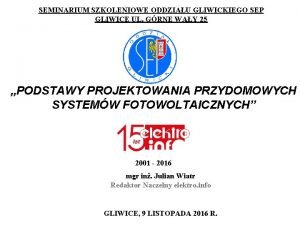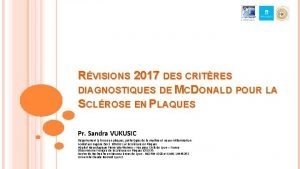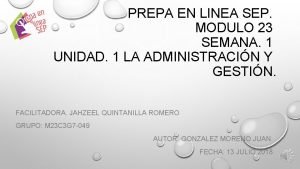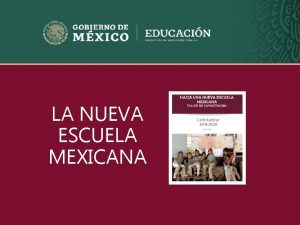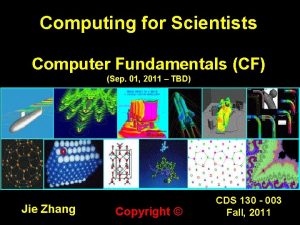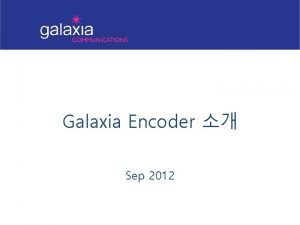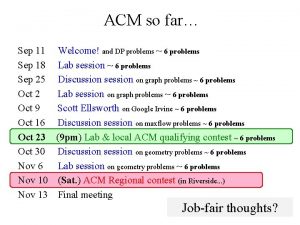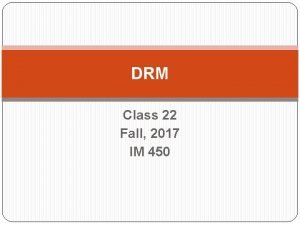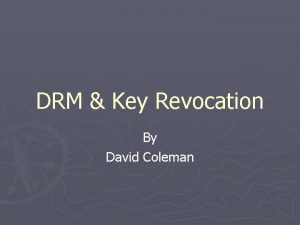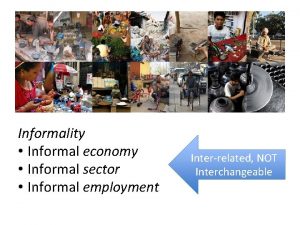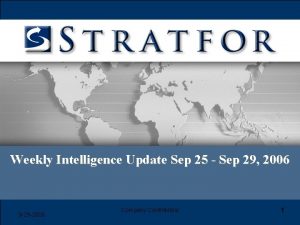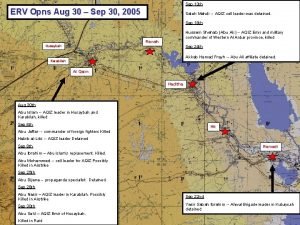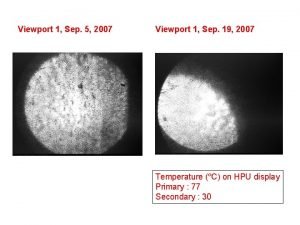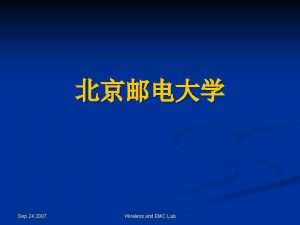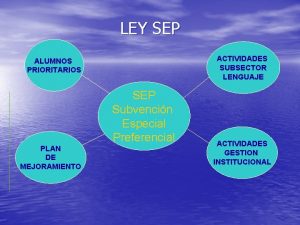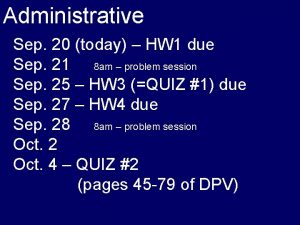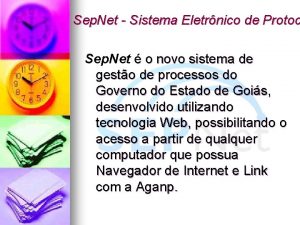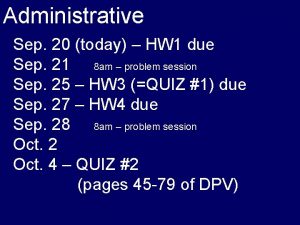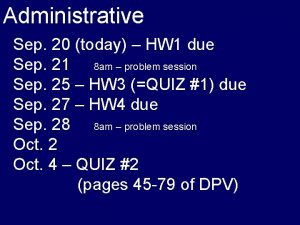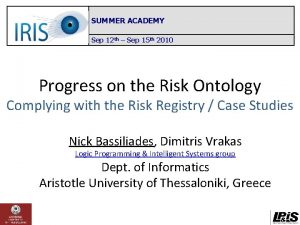DRM update DRM Development Sep 96 Informal meeting































- Slides: 31

DRM update

DRM Development • Sep 96 – Informal meeting between 5 broadcast-related organizations • Apr 97 – 1 st formal meeting of Digital Radio Mondiale. TM (DRMTM) • Mar 98 – 20 broadcast-related organizations signed the MOU in Guangzhou, as a first step to the official inauguration

DRM Development • Apr 2001 – DRM's has gained approval by ITU-R's members. The recommendation is now referenced as ITU-R BS. 1514 and under standardization process. • Sept 2001 – the European Telecommunications Standards Institute (ETSI) published the technical standard for DRM’s on-air system. The document is called ETSI TS 101 980 V 1. 1. 1

DRM Development • Nov 99 – Evaluation group carried out field test • 2002 – DRM is an international consortium of 72 broadcasters, network operators, manufacturers • 2003 – DRM is scheduled to launch

Digital AM System • i. BOC – USA (MW) – In Band On Channel system, analog and digital Tx on same channel – Wider BW requirement than DRM – MPEG 2 & OFDM

Digital AM System • DRM – Europe (LW, MW & SW) – Tx on same band, different channels. – Simulcast is underway – MPEG 4, QAM & OFDM

IBOC Spectrum Fig 1 – AM Hybrid IBOC Spectrum Fig 2 – AM All digital IBOC Spectrum

IBOC Spectrum Fig 1 – AM Hybrid IBOC Spectrum

IBOC Spectrum Fig 2 – AM All digital IBOC Spectrum

DRM Spectrum

DRM Field Test • Phase 1 – Nov 1999 ~ Mar 2000, point to point SW and MF transmission. – Transmission path testing. • Phase 2 A – Jul ~ Aug 2000 – Audio quality and reliability test

DRM Field Test • Phase 2 B – Dec 2000, broadcast in MF and LF bands. – 2001, transmission from Canada to Madagascar (13000 km)

DRM Field Test • Latest Test – 12 June 2002, Long-term DRM tests from Deutsche Welle and Radio Netherlands Bonaire, Netherlands Antilles are continuing. – The latest phase involves simulcast (analog/digital) mode. – Carrier frequency: 15530 k. Hz

DRM Field Test Commend • BBC – Compliance testing and specification validation Clear, Complete and Unambiguous

Features • Reinvigorate the use of frequency bands below 30 MHz – Short-Wave, Medium-Wave and Long-Wave • Improve sound quality, FM-like with the AM reach • Reduce interference by digital technique

Features • Wider coverage due to improved S/N • Alternative frequency switching and Single Frequency Network • Value added services: – Program labels – Text messages

Impact • Modification of existing transmission equipment is needed • New digital receivers is needed • Slightly reception improvement with existing output power • Better sound quality

Coming Up • OFTA invite RTHK to conduct a DRM trial test in Peng Chau at 810 k. Hz

Analogue Vs Digital

DRM System • Non proprietary, open standard • uses existing AM broadcast frequency bands, 9 – 10 KHz channel • Support SFN • Not support analog receivers • Simulcast is underway

Technical Info • Audio: – MPEG 4 Advanced Audio Coding (AAC) + Spectral Band Replication (SBR) compressed audio: 20 kbps / channel • RF: – QAM & ODFM (similar to DAB)

Spectral Band Replication

Digital Multiplex Audio Data MSC Multiplex Control signal FAC SDC

World wide field test

World wide field test

Countries with DRM Members 72 DRM-Members from 27 countries, 2002

16 QAM Constellation Change in amplitude and phase

MPEG-2 AAC • a high quality audio coding standard for 1 to 48 channels at sampling rates of 8 to 96 k. Hz, with multi-channel and multilingual capabilities. • AAC works at bit rates from 8 kbit/s for a mono speech signal up to 160 kbit/s for very high quality. • Three profiles of AAC provide varying levels of complexity and scalability.

MPEG-4 AAC • Coding and composition of natural and synthetic audio objects at a very wide range of bit rates • The representation for synthesized sound can be derived from text data or so-called instrument descriptions

MPEG-2 AAC Vs MPEG-4 AAC • MPEG-4 AAC has all the tools and functions of MPEG-2 AAC plus the Noise Substitution tool, a Long Term Predictor as well as extensions to support scalability

Useful Web Site • DRM: – official website: www. drm. org – www. ist-radiate. com • IBOC: www. ibiquity. com • MPEG: mpeg. telecomitalialab. com • ETSI Web site: www. etsi. org
 Backup and recovery techniques
Backup and recovery techniques Windows media drm
Windows media drm Heaac
Heaac Moboard cpa problems
Moboard cpa problems Philippine disaster reduction and management act
Philippine disaster reduction and management act Irm drm
Irm drm Drm architecture
Drm architecture Windows media drm
Windows media drm Drm sensor
Drm sensor Opera drm
Opera drm Cd drm
Cd drm Licence drm
Licence drm 교보 drm
교보 drm Leech lake drm
Leech lake drm Today meeting or today's meeting
Today meeting or today's meeting Today meeting or today's meeting
Today meeting or today's meeting What is meeting and types of meeting
What is meeting and types of meeting Types of meeting
Types of meeting Inculto casual ejemplos
Inculto casual ejemplos Prgoramme
Prgoramme Sep gliwice
Sep gliwice Critere mcdonald sep
Critere mcdonald sep Modulo 23 semana 2
Modulo 23 semana 2 Sep diagnostic différentiel
Sep diagnostic différentiel La nueva escuela mexicana
La nueva escuela mexicana Certified systems engineering professional
Certified systems engineering professional Sep computer
Sep computer Sep i
Sep i Complejo turistico la viña
Complejo turistico la viña Complejo sep dique la viña
Complejo sep dique la viña Ece sep
Ece sep Scorstim
Scorstim





